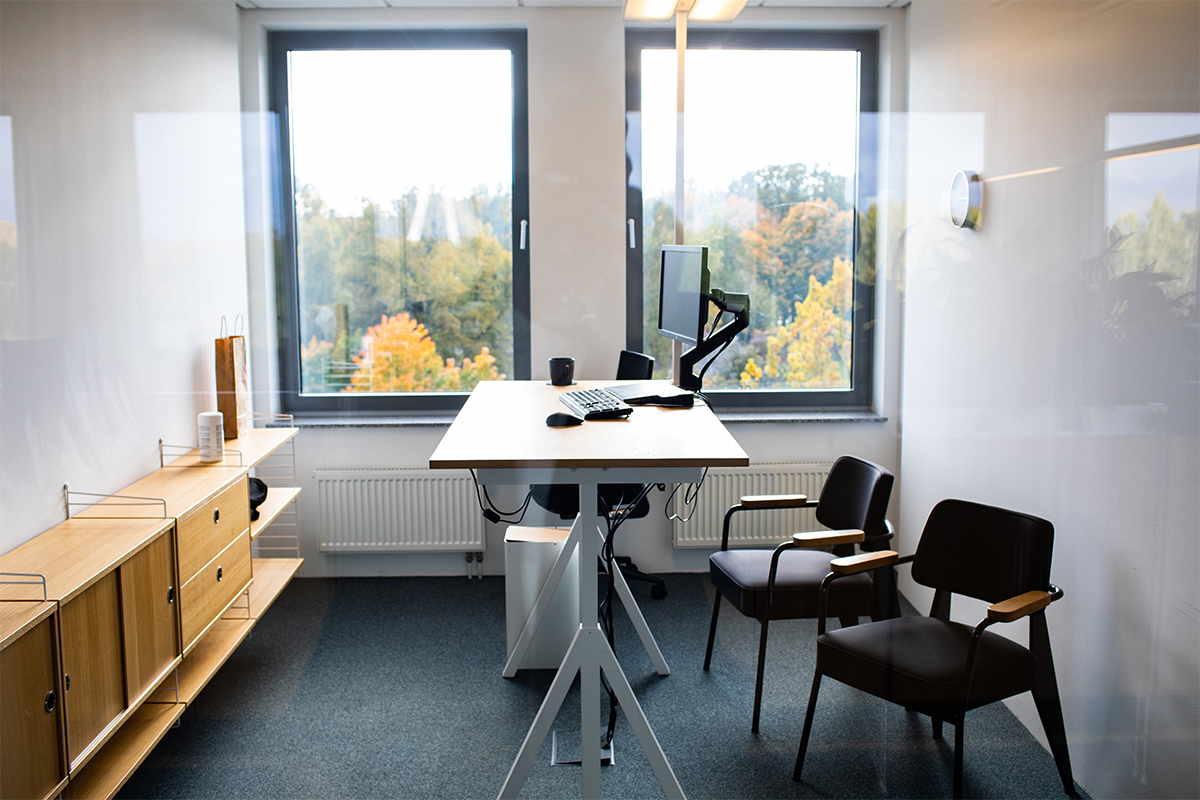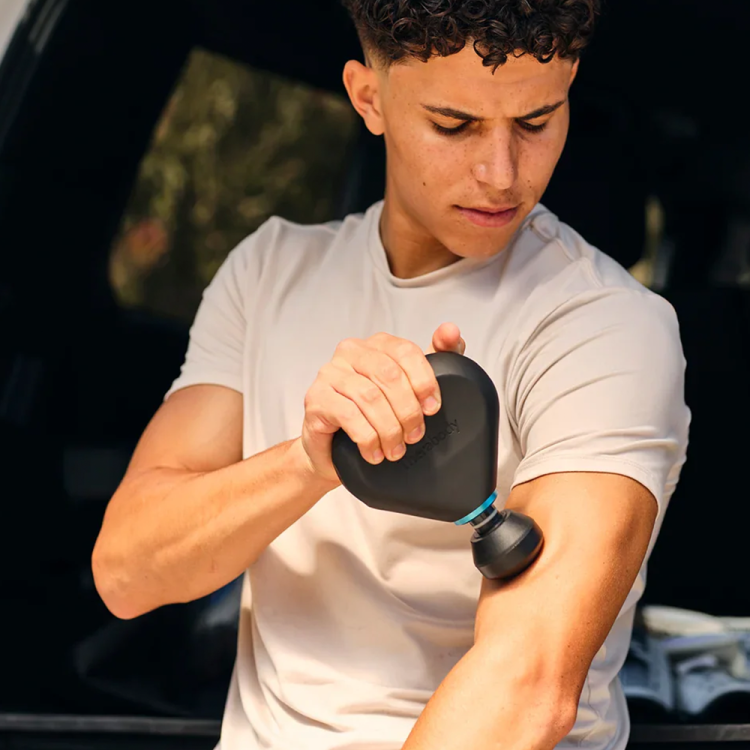As large companies opened offices over the last decade or so, it became increasingly common for them to charter the expertise of “ergonomic consultants.” These men and women would tinker with chairs, desks and monitors like mad scientists, intent on erecting as many defenses as possible against the very human tendency to hunch and slump.
Over the years, such consultants fielded more requests from workplaces to install standing desks. Why? Because tech giants like Facebook and Google offer standing desks as part of “employee-wellness programs.” Because the phrase “sitting is the new smoking” has taken off has a handy one-liner (albeit a grossly hyperbolic one). Because it’s cool to be healthy, and there’s a $4 trillion industry constantly reminding you of that.
In 2016, some consumer trend reports showed that sales of standing desks were outpacing those of conventional desks. While the craze has died down a bit, the concept that you don’t need to sit, or perhaps should not sit while working, hasn’t. As we work towards firming up our WFH spaces, for a period of hibernation that could extend well into winter, many of us have become our own ergonomic consultants.
That’s a worthy pursuit. A standing-forward workday can reduce your risk of diseases that can result from too much sitting. Think: obesity, diabetes and even cancer. Still, it isn’t as simple as moving your laptop three feet higher into the air. Even in the office, standing deskers make a variety of very common, very fixable mistakes. So let’s go over them.

Remember to take breaks
Most people switch to a standing desk under the presumption that standing is healthier for the body than sitting. At an elementary level, they’re right: eight hours (at least) of sitting a day, most of it during working hours, is a national public health issue. A sedentary lifestyle disrupts the body’s ability to break down body fat, slows the metabolism, can elevate both blood sugar and blood pressure figures, and wreaks havoc on the back, neck and shoulders.
That said, merely subbing in eight hours of standing is no silver bullet. The “too much of anything …” adage applies here. It’s imperative that standing deskers — especially newcomers — take periodic breaks throughout the day. Every 30 minutes, find some way to move your body from its fixed standing position. Think about standing in a long line for a concert or a game — you don’t just stand there like a statue. Your body shifts from side to side. You try to make yourself as comfortable and loose as possible, within the boundaries of your confined space.
At work, there is a tendency to “lock in” and bang out large chunks of tasks in a row. I won’t deny that that mentality can work. It brings me to the finish line all the time. Concentration is notoriously streaky, and harnessing it once you’ve found it is important. But at the least, standing still for hours at a time will lead to aches and joints from your feet all the way up your spine. And more seriously — if you have varicose veins, for instance — standing all day will leave to blood to pool up in the legs, forcing it to fight through a swollen cardiovascular system in order to make it back to the heart.
…but not that kind of break
According to research published in the Journal of Physical Activity and Health in 2015, standing only burns about eight more calories per hour than sitting … which is equivalent to the caloric energy of a single raw almond. That’s not to dispute that working from your feet is an improvement on doing so from your butt — it could be an absolute godsend for your posture. But from a caloric perspective, from a cardiovascular perspective, standing isn’t exercise. So just because you’re working at a standing desk, you shouldn’t view sitting as a reward for good behavior. Reclining on a bed or couch as a “break” from a standing desk can defeat the purpose of assembling one in the first place.
The best way to take a break from a standing desk is to go for a walk. We’ve been beating the daily constitutional drum for a while now, and we’ll continue to do so until everyone starts setting aside 30 minutes each workday for an afternoon amble. Not only will walking burn more calories (that same study saw its participants burn 210 calories an hour while walking), it will jumpstart flow of the blood that sits in your lower half while standing in front of a computer. That blood will find its way to your brain, which will lead to some sharper shifts in the dreaded 4-6pm alleyway.
To be clear: you can and should sit during. A standing desk shouldn’t sentence you to a life of standing for a while before walking it off. Just be mindful of sitting in a way — back against the chair, elbows in, screen at eye level — that does your other efforts justice.
Why You Should Be Taking a Daily Constitutional
It’s about time we talked afternoon amblesGet the height right
To that last point: while standing, it’s crucial that your monitor is high enough that A) the top right and left corners of the screen are even with your eyes, and B) your elbows are locked at a 90-degree angle as you type. (Ergonomic experts like to use the phrase “alligator arms.”) Standing desks come in many shapes and sizes, and with offices closed, standardization is out the window at the moment. Some workers balance a laptop on a pile of encyclopedias and call it a day, others have minimalist bamboo options, others have expensive setups with “monitor arms” which allow users to fiddle with the height accordingly.
This is a situation where taking just a few minutes at the beginning — to confirm that your arrangement meets requirements A and B above — can make a world of difference. There’s no sense in changing your habits, and possibly throwing down money, only to end up with different kinds of soreness. Slumping in a chair creates a banana-like “C” curvature in the low back, but hunching over a screen while standing will round the shoulders and induce “tech neck.” It’s possible to fix, but the process is unpleasant.
Don’t ignore the floors
Hardwood floors, tile, concrete, a carpet that was installed in 1987 … standing on a compact, zero-give surface all day is a fast track to joint pain. If you’re making a point to take walking breaks, you can limit the potential harm, but the best way forward is to invest in an “anti-fatigue” standing mat. They generally cost between $30-100 and feature non-slip bottoms so you can park the thing anywhere and rely on it to stay in place. The designs on these things vary: some are flat with beveled edges, and others, like the Ergodriven Topo (which the internet loves), has a contoured surface that will naturally compel your feet legs to shift positions.
Footwear counts, too
Another benefit of WFH: no one can see your feet. Footwear, or lack thereof, plays a significant role in any successful standing desk operation. With a malleable rubber anti-fatigue mat handy, you might consider taking shoes (and socks!) off, giving your toes a chance to dig into the texture. Stretching your feet out into a shag rug can also keep your lower half engaged. But regardless, it’s a smart idea to have a pair of shoes that you feel comfortable standing in. Without any expectations for loafers or wingtips, feel free to figure out the exact sort of toe box, heel height and comfort level that works for you.
If you want a ton of comfort, and don’t mind standing sort of high off the ground, opt for a casual runner like a Nike Joyride. If you want a wider front (feet can swell during the day) and a flat surface, Reebok’s previous Nano generations have great options. If the idea of wearing an athletic shoe all day at work is just too weird, opt for a casual compromise, from Allbirds or Vans. Some folks (including nurses) even swear by Birkenstocks, because the footbed molds to the exact specifications of the wearer over time. The main point here is to take an active, rooting interest in preventing aches and pains in your feet. That way they won’t make the trip all the way up your spine.
The Charge will help you move better, think clearer and stay in the game longer. Subscribe to our wellness newsletter today.






















